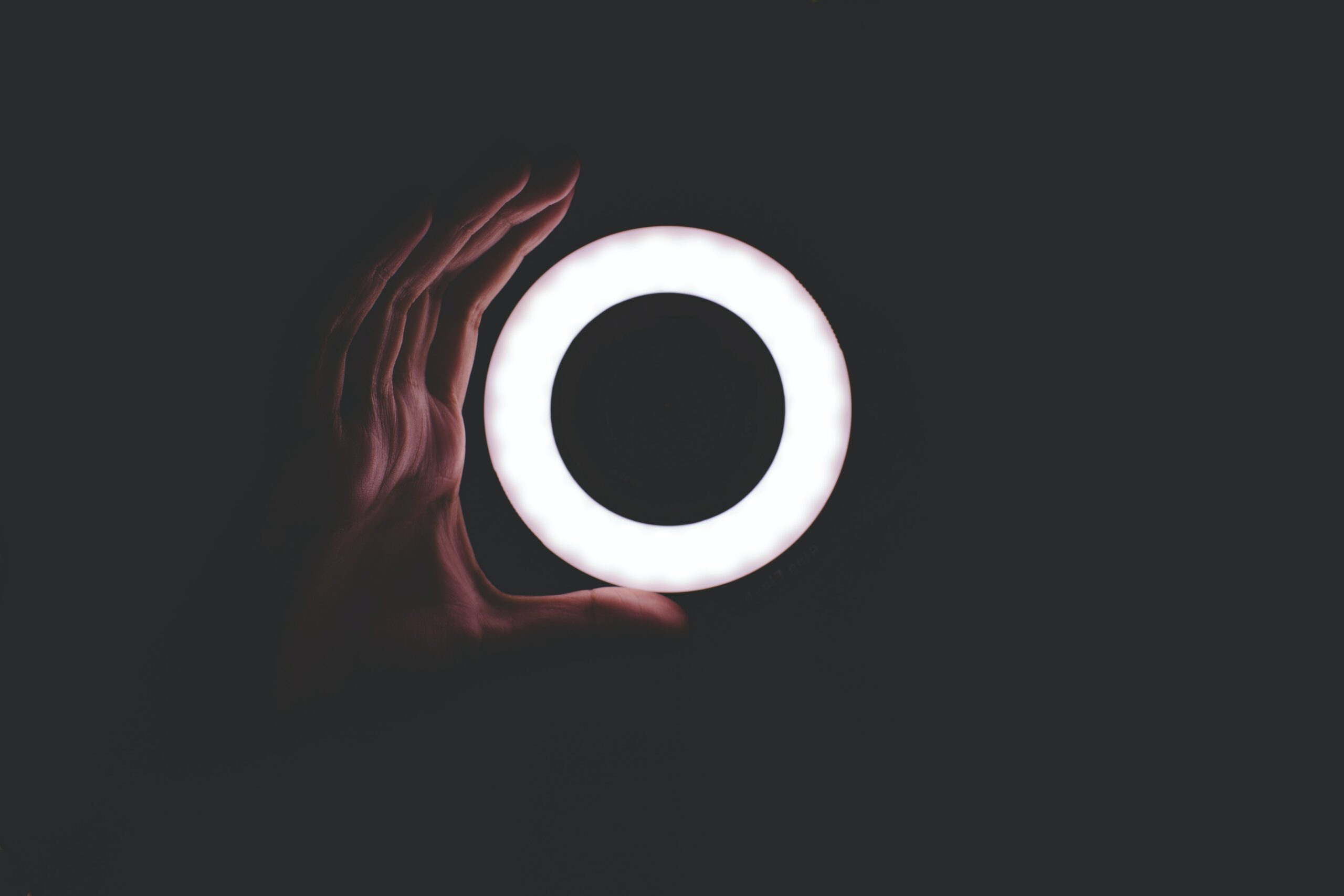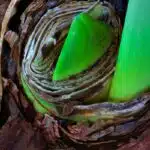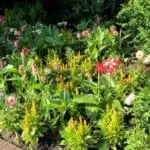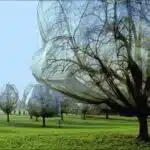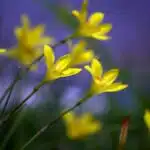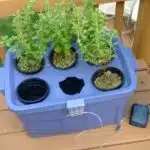Have you ever wondered if you could transform your home or workspace into a lush and vibrant garden, with the power of light? Well, it may just be possible. By harnessing the power of LED lights, it is now possible to cultivate plants indoors. Like a magical spell that brings life to a barren landscape, the LED light will bring your indoor gardening dreams to life!
For those interested in cultivating plants indoors, LED lights offer an efficient way to do so. With the right color wavelength and intensity of light, plants can grow without needing natural sunlight. This makes indoor gardening more accessible for anyone who lives in areas with limited natural sunlight or harsh climates. Additionally, using LED lights means fewer energy costs since this type of lighting is more energy-efficient than traditional incandescent bulbs.
The question remains: Can you really grow plants with an LED light? To answer this question, we’ll explore what kind of plants can be grown under artificial lighting and how to set up an indoor garden with LED lights. We’ll also discuss common challenges associated with growing plants indoors and some potential solutions for overcoming them. So let’s take a look at how these modern little wonders of technology can help us create our very own greenhouse oasis!
What Is An Led Light?
LED lights are a luminous source of energy that is renowned for their low energy consumption and long lifespan. Leveraging the latest lighting technology, LED lights can be used to provide illumination in a variety of settings, from homes to businesses. But did you know that LED lights can also be used to grow plants? Let’s explore how these powerful lights can benefit your garden.
As an expert in botany and gardening, I’m excited about the potential of LED lights for growing plants. Not only do they use less power than traditional bulbs, but they also emit light in specific spectrums that are beneficial to plant growth. This means you can customize the type and intensity of light your plants receive – something which would otherwise take up too much space or be too expensive with other lighting sources.
LED lights offer several advantages when it comes to providing light for your plants. With adjustable brightness and color temperatures, you have greater control over the amount of light your plants get. And since LED lights produce less heat than other types of bulbs, you don’t have to worry about them getting too hot or burning foliage near them. In addition, LED lights are cost-effective and easy to install – making them ideal for any size garden or budget!
Advantages Of Led Lights For Plant Growth
Gardening is an activity that can bring joy and peace to our lives. But to get the most out of it, you need the right tools. And one of the most revolutionary tools for gardening are LED lights! As a specialist in botany and gardening, I’m here to tell you why LED lights can be a huge advantage for your plants’ growth.
LED lights provide many benefits over other grow light options. For starters, they don’t require a massive amount of energy to run, making them much more cost-effective than traditional fluorescent or incandescent bulbs. Additionally, they produce minimal heat, so they won’t burn your plants or damage their delicate leaves and flowers. Plus, since LEDs emit very little UV radiation, there’s less risk of sunburn and other damage from overexposure to ultraviolet rays.
LEDs also have incredibly long lifespans compared to other lighting options, meaning you won’t have to replace them as often. This will save you time and money in the long run, while ensuring that your plants get consistent light levels throughout their growing cycle. On top of this, LEDs come in a variety of colors which can be used for different purposes such as promoting flowering or vegetative growth depending on what type of plant you’re working with.
TIP: When selecting LED lights for your plants’ growth needs, make sure to take into account the spectrum of light needed for optimal results as well as the wattage needed for coverage size and intensity. With careful consideration and research on what kind of lighting system is best suited for your particular garden needs will ensure happy and healthy plants!
Led Lights For Plant Propagation
LED lights have revolutionized the propagation of plants, allowing horticulturists to cultivate even the most delicate of species with ease. Taking root in a new era of modern growing methods, LED lighting systems are a prime example of how plant care can be made simpler and more efficient.
As an added benefit, LED lighting for propagation is incredibly energy-efficient, making it possible for growers to save money on their electricity bills while providing enough light to promote healthy growth. Furthermore, LED lights don’t produce excessive heat like traditional incandescent bulbs, so they are much safer to use in humid environments where temperatures can easily become too hot for the plants.
In addition to its energy-saving capabilities and safety aspects, LED lighting also allows for greater control over the color spectrum of light that reaches the plants. This means that specialty species may be given just the right balance of red and blue light frequencies to encourage maximum growth potential. With such versatility and precision capabilities at hand, it’s no wonder why LED lighting has become the preferred choice for propagating plants indoors!
Led Lights For Seed Starting
Starting a garden can be an exciting experience. To get the best results, it is essential to have the right equipment. LED lights are a great choice for seed starting, as they provide a balanced light spectrum and efficient energy use.
LED lights come in a variety of wattages and colors and cut down on energy consumption. When using LED lights for seed starting, it is important to choose ones that are designed specifically for plants. This will ensure that the lights are providing enough light at the correct spectrum for optimal growth. The most efficient way to use LED lights for seed starting is to hang them close to the top of the growing space so that all of the seeds receive plenty of light.
The amount of time that LED lights should be used when starting seeds depends on the type of plant being grown and its individual needs. Generally, it is best to keep them on at least 12-16 hours per day until plants have germinated and developed their first set of true leaves. After that point, you can begin reducing the amount of time spent under LED lighting to around 8 hours per day or less depending on your specific situation. With proper care and attention, LED lighting can help create a thriving garden full of healthy plants!
Led Lights For Growing Vegetables
Growing vegetables with LED lights is an increasingly common practice among home gardeners. With the right hardware and setup, you can have a thriving vegetable patch even when there isn’t enough natural sunlight. LEDs are far more efficient than traditional grow lights in terms of energy consumption and heat output, so they’re an ideal choice for small-scale vegetable production.
When it comes to choosing the best LED light for growing vegetables, there are several factors to consider. The type of bulb will depend on the stage of growth you want to target: flowering or vegetative growth. Additionally, the wattage and color spectrum of your light will affect how many hours per day you need to run it. It’s important to research the specific needs of your chosen vegetables before making a purchase.
Finally, getting the right placement for your LED light is essential to ensure optimal vegetable growth. You’ll want to place it as close as possible to your plants without burning them or creating too much heat. A good rule of thumb is one foot above your plants for every two feet away that they are from the light source. This way, you’ll get maximum exposure without risking any damage due to excessive heat or direct lighting.
With careful selection and proper placement, LED lights can be an effective tool for growing vegetables in any environment!
Led Lights For Growing Herbs
Herbs, like vegetables, need light to grow. With the right LED lights, they can thrive in any environment. Alluding to the natural process of photosynthesis, it can be said that LED lights are a form of artificial sunlight for plants. They provide a balanced spectrum of light that allows herbs to flourish in any conditions.
When deciding on which type of LED light is best for growing herbs, there are certain factors to consider:
- The wavelength of the light matters and should be tailored to the type of herb you’re growing
- The intensity should also be taken into account as different types and amounts of light are needed for different herbs
- The duration or time frame in which the herb will be exposed to the LED lights also needs to be considered
- Lastly, consider how much heat is produced by each LED light as too much heat can damage or kill herbs.
As an experienced botanist and gardener, I understand the importance of finding the right balance when it comes to utilizing LED lights for growing herbs. Different herbs require different levels and types of lighting; therefore it is essential to do your research before selecting an option that works best for you. By taking these factors into consideration one can ensure their herbs will grow healthy and thrive with nothing butLED lights. With a little effort and knowledge anyone can become a master herbalist!
Led Lights For Growing Flowers
LED lights have become an increasingly popular tool for growing plants. As a botanist and gardener, I’m frequently asked about the potential of LED lights to help cultivate beautiful flowers. Here’s what you need to know:
Firstly, let’s consider why LED lights are so effective for growing plants, particularly flowers. The long-term efficiency of LEDs means less energy is wasted as heat and more can be used to grow the plant. Secondly, LED bulbs come in a wide range of colors and spectrums that provide customizable light conditions for different types of plants. Thirdly, LED lights remain cool when in use, making them safe for indoor use and reducing the risk of overheating delicate plants. Fourthly, many LED products can be programmed to provide varying light intensity cycles which closely mimic natural sunlight and support flower growth. Finally, LEDs typically have a long life span so you don’t need to worry about replacing them often if you’re growing flowers indoors.
With all these benefits in mind it’s clear why LED lighting is an ideal choice for growing flowers indoors or outdoors. You can easily control the environment around your plants with adjustable light settings while being assured that they will receive adequate illumination throughout their lifespan. Best of all, LED bulbs provide enough power to fuel flowering without sacrificing efficiency or risking damage to fragile petals and leaves due to excessive heat!
So now that you understand how useful LEDs are for cultivating gorgeous blooms why not give it a try? With careful planning and thoughtful setup you could be enjoying vibrant floral arrangements in no time at all!
Led Lights For Growing Succulents
Plants have always been a source of life and sustenance, and LED lights are a modern way to keep them growing. They can be seen as lamps that provide the same warmth and nourishment that the sun has for centuries. With LED lights now available to gardeners, growing succulents is more accessible than ever. Here’s how to make the most of these lights:
Choose wisely when selecting an LED light source. Consider both the type of succulent you’re growing and the amount of light it needs.
Position the light correctly. This will ensure your succulents are receiving adequate amounts of light throughout their growth cycle. Pay attention to the wattage as well; too much or too little light can be detrimental to plant health.
Determine how often you need to water your succulents while using LED lighting. Succulents need less water than other plants, so adjust your watering schedule accordingly.
Monitor your plants closely during their growth period under LED lights. Make sure they remain healthy and thriving by checking for signs of nutrient deficiencies or pests regularly.
LED lights are an effective way to grow succulents without having to rely on natural sunlight or large heat sources like greenhouses. By following these tips, you’ll be able to give your plants all they need with minimal effort and cost while also enjoying their beauty in your home or garden!
Led Lights For Growing Houseplants
Are you interested in growing houseplants with LED lights? It’s possible – and you can do it without spending a fortune! The technology is here, and the results can be quite impressive. Let’s take a closer look at how to get started.
First, let’s talk about what types of plants are best suited for growing with LED lights. Some of the most popular choices include ferns, ivy, spider plants, orchids, and many varieties of foliage. These plants are known for their low maintenance requirements, which makes them ideal candidates for your LED light setup.
Next, let’s consider the kinds of lights that work best for this type of setup. LEDs provide the right combination of light intensity and spectrum to ensure your plants get all the nutrients they need. You’ll also want to consider other factors such as heat dissipation and color temperature when choosing an LED light system for your houseplants.
TIP: When selecting an LED light for your plants, remember that you should place it close enough to give your plants plenty of light but far enough so that it doesn’t become too hot or uncomfortable for them. This will help keep your plants healthy and happy!
Choosing An Led Light For Your Plants
Choosing the right LED light for your plants is a critical decision. An LED light not only provides the necessary illumination but also helps to regulate your plants’ growth. So, it’s important to make sure you pick one that fits your needs and budget.
When selecting an LED light for your plants, there are several factors to consider. First and foremost is the type of plant you’re growing. Different plants require different intensities and wavelengths of light, so make sure the LED light you choose matches those requirements. Additionally, make sure that the light will cover a large enough area or provide sufficient illumination for each individual plant if needed.
The cost of an LED light is another key factor to consider when making this purchase. High-quality lights can be expensive, but they will last longer and provide better results than cheaper models. Therefore, it’s worth investing in a good quality product if you want great results from your plants’ growth.
TIP: When selecting an LED light for your plants, take into account both the type of plant you’re growing and how much money you’re willing to spend on a quality product – these two factors will help ensure that you get the best results from your purchase!
Factors To Consider When Choosing An Led Light
When it comes to growing plants with an LED light system, there are a handful of factors that should always be considered. To illustrate this point, consider the example of a gardener who was initially excited at the prospect of growing a nutrient-rich tomato plant indoors with an LED light. However, after setting up the light and spending hours tending to their plant, they were dismayed to find out that the tomatoes had not grown as expected. The reason? They had failed to take into account certain environmental factors when selecting the LED light for their plants.
As a specialist in botany and gardening, I have found that there are several key considerations when choosing an LED light for your plants. Firstly, you must ensure that you choose the right type of bulb for your particular plants – some bulbs emit more or less of certain spectrums than others and this can have a huge impact on how well your plants grow. Secondly, you should consider the intensity of the lights – too strong and your plants may become stunted; too weak and they may not get enough energy to develop properly. Finally, you should also pay attention to how much heat is being emitted by the lights – if it’s too hot then your plants may suffer from dehydration or even die outright.
In order to make sure that you’re choosing the right LED light for your plants, doing research before purchasing is essential. Take time to read up on different types of bulbs and understand which one will best suit your needs – reading customer reviews can also be helpful here as they can provide valuable insights into which products perform as advertised and which ones are best avoided. Additionally, don’t forget about climate control; if you’re using LEDs in an enclosed space then you’ll need to make sure it’s well ventilated so that any excess heat doesn’t damage or kill your precious plants! With these considerations in mind, setting up an LED light system for your indoor garden should be a breeze!
Setting Up An Led Light System
The setting up of an LED light system is like a seed being planted in the garden of your home, with the potential to blossom into a beautiful display. The light emitted from these innovative devices can be likened to the sun’s rays that nourish plants, allowing them to grow and thrive. It is important to take into consideration various factors when deciding on the ideal LED system for your needs.
Firstly, consider the type of plants you wish to grow and their individual requirements for optimum growth; different types will require different levels of lighting. If, for example, you are looking to create an indoor garden with a variety of flowers or vegetables, then you should opt for an LED system that provides a higher intensity level than those used for general plant growth. Secondly, think about the size of your space; larger spaces may require additional lights to cover all areas adequately. Additionally, it’s important to make sure that the wattage of each LED bulb is appropriate for what you are trying to achieve.
Finally, it’s important that your LED light system is set up correctly so as not to cause any damage or harm to your plants in the long run. Make sure that any cords are secured properly and far away from any water sources or hot surfaces; also check that all bulbs are securely fitted and at the correct distance from each other and from the plants they are intended to illuminate. With proper installation and maintenance, you can ensure that your LED light system will provide optimal lighting conditions for growing healthy plants.
These steps will ensure your setup is successful and will provide an ideal environment where your plants can flourish under an effective LED light system.
Caring For Plants Grown With Led Lights
Recent research has shown that LED lights can be used to grow plants. This is an exciting prospect, as LED lights are much more energy efficient than traditional lighting options. In fact, LED lights consume up to 75% less energy than other types of lighting.
It’s important to consider the type of plants you’re growing with your LED light system. Different plants have different lighting requirements, and it’s important to know how much light they need in order to thrive. You’ll also want to make sure you give them the proper amount of water and nutrients in order for them to grow healthy and strong.
When caring for a plant grown with an LED light system, it’s important to pay attention to the temperature of the environment as well. Some plants may require cooler temperatures for optimal growth, while others may need a bit warmer environment. It’s also important to keep an eye on the humidity levels in your environment, as too low or too high can adversely affect your plants’ growth.
TIP: Be sure to research the specific needs of each plant you’re growing with your LED light system – this will help ensure they get all the necessary care they need!
Troubleshooting Tips For Growing With Led Lights
Growing plants with LED lights can present a unique set of challenges. That’s why it’s important to be prepared and understand the troubleshooting tips that can help your plants thrive. In this section, I’ll provide you with the information you need to identify potential issues and take corrective action.
LED lights are designed to emit specific wavelengths of light that can support photosynthesis. If you’re using LEDs for growing, it’s important to understand which colors are best for your plants. Too much or too little of certain colors can cause problems like stunted growth or discoloration. If you notice these types of issues, check your lighting setup and make any necessary adjustments.
Temperature is also an important factor in successful LED lighting. Heat buildup from the lights can damage delicate leaves, so it’s essential to keep the temperature low enough to avoid any damage. You may also want to adjust your lighting schedule if temperatures become too high during certain times of day. This will help ensure that your plants get the optimal amount of light without overheating them.
By understanding and addressing these key factors, you can ensure that your plants receive the light they need while avoiding any potential problems along the way. With the right approach, LED lighting can be a great way to grow healthy, vibrant plants in any environment!
Cost Of Growing With Led Lights
Growing with LED lights is like waking up your garden every morning: it’s a cost-effective and efficient way to give your plants the light they need to thrive. It is becoming increasingly popular among gardeners, just as the sun rises each morning.
Like any technology, LED lighting comes with its own set of costs. You may have to pay extra for special bulbs or fixtures if you want to use LED lights in your garden. In addition, there are often additional installation costs associated with wiring and setting up the lights. Once installed, however, LED lights can be very economical to operate because they consume less electricity than traditional lighting sources.
Overall, growing with LED lights is an excellent investment for those who want to give their plants the best possible environment for growth without breaking the bank. Despite these associated costs, this type of lighting system can save money in the long run due to its energy efficiency and longevity. Moreover, it can provide a significant boost in yields compared to traditional lighting sources.
Frequently Asked Questions
What Is The Best Type Of Led Light For Growing Plants?
When it comes to growing plants with an LED light, the type of light you use is critical. After all, plants need certain wavelengths of light in order to thrive and bloom. So what’s the best type of LED light for growing plants? Let’s take a look.
The most important factor to consider when choosing an LED light for plant growth is the spectrum of the light emitted by the bulbs. Plants require a combination of blue and red wavelengths in order to grow optimally. While many types of LEDs emit blue and red light, it’s important to make sure that you get one that emits both at the right intensities. A specialized full-spectrum LED bulb will provide your plants with just what they need for healthy growth.
In addition to the spectrum of light emitted by the bulbs, it’s also important to consider how much energy each individual bulb uses. If you’re using multiple bulbs, their energy efficiency can really add up over time! It’s best to choose LED lights that are designed specifically for plant growth so that they have lower energy consumption while still providing your plants with adequate lighting conditions.
Fortunately, there are plenty of great options out there when it comes to finding LED lights specifically designed for growing plants. With a bit of research, you can find a perfect setup that meets your budget and provides your plants with ideal lighting conditions!
How Much Energy Does An Led Light Use?
Using LED lights to grow plants is a great way to save energy. But just how much energy does an LED light use?
Surprisingly, LEDs are incredibly energy-efficient, which makes them a great choice for growing plants indoors. To understand why, there are a few factors to consider: •tLEDs don’t generate heat like other lighting methods, so they use less energy overall. •tThey also produce more lumens of light per watt than traditional bulbs, meaning more light for the same amount of energy used. •tLastly, LEDs can be tailored to emit specific wavelengths of light that are ideal for different types of plants.
As a specialist in botany and gardening, I can confidently say that using LED lights for plant growth can save you money on your electricity bills and help your plants thrive! The best part is that LED lights last up to 50 times longer than traditional bulbs, so their initial cost is quickly recouped in savings over time. Plus, they require minimal maintenance and won’t need to be replaced as often as other lighting methods.
LEDs have revolutionized indoor plant growing by providing a reliable source of high-quality light that doesn’t break the bank or require frequent replacements. With the right setup, you can create an optimal environment for any type of plant while saving energy and money in the long run!
Are There Any Health Risks Associated With Using Led Lights For Growing Plants?
As a specialist in botany and gardening, it’s important to consider the potential health risks associated with using LED lights for growing plants. For instance, recent research has found that some LED lights have been linked to an increased risk of retinal damage in humans when exposed for long periods. This is important to keep in mind if you’re looking to grow plants indoors with LED lighting.
It’s also essential for gardeners who are growing plants indoors with LED lighting to ensure they know exactly what kind of light their plants need. Different types of LED lighting can produce different wavelengths of light, which can affect the growth and health of the plant. For example, blue-wavelength LEDs may be beneficial for vegetative growth, while red-wavelength LEDs may be better suited for flowering or fruiting stages.
Finally, it’s also important to remember that because LED lights produce so little heat, they won’t be able to provide enough warmth or humidity during the winter months when temperatures drop below freezing. This could lead to poor growth and development of your plants in cold weather environments. For this reason, it’s best to supplement your LED lighting setup with other heating methods such as heating pads or mats during colder months.
Is It Necessary To Adjust The Led Light Setup As The Plants Grow?
As a specialist in botany and gardening, I’m often asked about the need to adjust LED light setup as plants grow. The answer is yes, it is important to make adjustments to your LED lights for optimal growth.
The amount of light plants receive from LED lighting affects their growth rate and health. As plants mature and become larger, they need more light to produce bigger yields. Therefore, you should increase the intensity of the light or move the lights closer to ensure that your plants are receiving enough illumination.
In addition, as LED lights age, they tend to lose brightness over time. This means that you must also replace your LED lights periodically so that your plants have enough energy for photosynthesis. This helps keep them healthy and growing strong throughout their entire life cycle. Planting success requires careful monitoring of light levels and periodic adjustments to ensure that your plants get the best possible environment for growth.
How Much Does It Cost To Start A Led Light Garden?
Starting a LED light garden is a great way to bring the beauty of plants into your home without having to worry about sunlight or other environmental factors. But how much does it cost to get started? The answer might surprise you.
An LED light garden can be extremely budget friendly, depending on the size and scope of the project. For example, you can buy starter kits that include all the necessary hardware such as lights, reflectors and controllers for under $100. That’s a small price to pay for an entire garden indoors! And if you already have some basic gardening tools and supplies, then you can save even more money by purchasing only the LED light equipment you need.
Beyond the initial costs, there are also ongoing expenses associated with keeping an LED light garden running smoothly. You will need to replace bulbs periodically, and make sure your reflectors remain clean and free from dust build-up. Additionally, if you want to grow plants with different needs or preferences in terms of lighting levels and intensity, then you may need additional equipment or accessories to meet those requirements. So it’s important to consider all these potential costs when planning out your LED light garden setup.
All in all, setting up a LED light garden is an exciting endeavour that can be quite affordable if done correctly. With careful budgeting and research into potential costs down the line, anyone can create their own indoor oasis without breaking their bank account!
Conclusion
In conclusion, LED lights provide a viable, cost-effective and sustainable way to grow plants indoors. With the right setup and adjustments, it is possible to create an ideal environment for a wide range of plants. LED lights are energy efficient, easy to maintain and have minimal health risks associated with them.
The beauty of having an LED light garden is that you can control the environment and customize it according to your plants’ needs. You can create an oasis of greenery in your home or office space that will provide aesthetic pleasure as well as air purification benefits. All you need is a bit of knowledge about plant care, a good understanding of how LED lights work, and some patience!
Overall, starting an LED light garden is a great way to nurture your green thumb! With careful planning and the right setup, you can create a thriving indoor garden that will bring life into any space. Whether you’re looking for a conversation starter at parties or simply want to add some greenery to your living room, LED lights are the perfect solution. So why not give it a try today?

